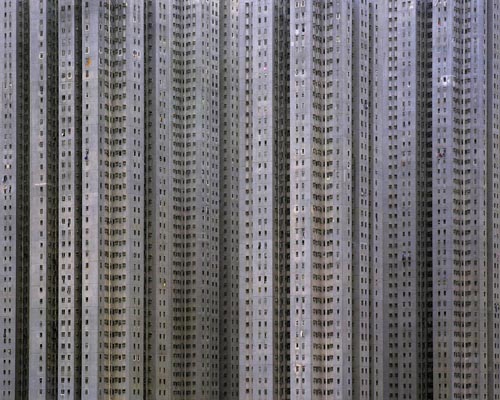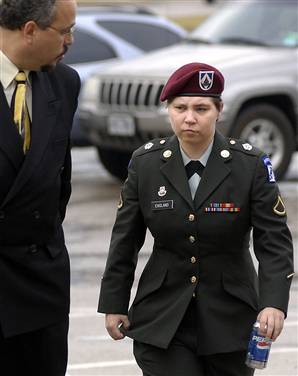Robert McNamara, one of the most powerful men of the twentieth century, has died aged 93. He is best known for having served as US Defence Secretary during the Vietnam War, but he has been at the top of the pyramid of power for close to 40 years in: the private sector (President of Ford Motor Company); government (US Defence Secretary for JFK and LBJ); and even in the intergovernmental sector (President of the World Bank from 1968-1981). To my knowledge he has nothing to do with photography, but in 2004 Errol Morris made a brilliant documentary on McNamara's life entitled the Fog of War: Eleven Lessons from the Life of Robert McNamara. In anyone else's hands this could have been an extraordinarily boring film. But Morris caught McNamara at a late stage in life, and, by using an interview technology that he designed (the Interrotron), Morris succeeded in getting McNamara to reveal the growing cracks in his armour. For anyone that has an interest in the history of the twentieth century, this is a must-see.
Review: Michael Wolf @ Galerie Particulière
 Michael Wolf's recent semi-relocation to Paris has led to an exhibition, Metropolis, at the Marais' new Galerie Particulière. The show combines work from his Hong Kong series, Architecture of Density, and Transparent City, shot later in Chicago. Wolf's study of Hong Kong's trademark high-rise architecture is aptly-named. He refers to these as 'no-exit' photographs: by flattening perspective and cropping out any visual reference points (no sky or ground here), the eye is given no escape route and we are faced purely with the dense, barren surfaces of these human ant hills. The exteriors of these high-rises become abstractions, never-ending repetitions of architectural patterns, with only the odd piece of dangling laundry to remind us of the thousands of people within.
Michael Wolf's recent semi-relocation to Paris has led to an exhibition, Metropolis, at the Marais' new Galerie Particulière. The show combines work from his Hong Kong series, Architecture of Density, and Transparent City, shot later in Chicago. Wolf's study of Hong Kong's trademark high-rise architecture is aptly-named. He refers to these as 'no-exit' photographs: by flattening perspective and cropping out any visual reference points (no sky or ground here), the eye is given no escape route and we are faced purely with the dense, barren surfaces of these human ant hills. The exteriors of these high-rises become abstractions, never-ending repetitions of architectural patterns, with only the odd piece of dangling laundry to remind us of the thousands of people within.
The dense, claustrophobic concrete of Hong Kong's high rises gives way to a sleeker, more statuesque Chicago. These later photographs extend Wolf's study of the skin of the city, but Chicago's glass skyscrapers reveal far more of the life beneath it. He begins to carve details out of these cityscapes, giving some of the work a certain voyeuristic edge, which he acknowledges with a dramatic image containing a clin d'oeil to Hitchcock's Rear Window. Wolf's compositions are always beautiful, and his extra-large prints beautifully made*, however these series are not eulogies to the modern city. Instead they convey a sense of isolation and of the oppression of this architecture over the lives of its inhabitants. If only Le Corbusier could have seen these images...
* Wolf has a great website, but see his prints if you can because this work really demands scale.
Rating: Recommended
Further reading: Interview by JM Colberg Audio interview by Jim Casper
Abu Ghraib and Lynndie England
 Lynndie England is (thankfully) no longer a hot topic, but I was reminded of her story by this week's episode of the consistently excellent This American Life. For those of you that haven't switched on a TV or read a blog (or one of those newspaper thingies) in the past year, England was one of the US soldiers that was photographed humiliating naked Iraqi prisoners in Abu Ghraib. One particular picture, showing her holding a leash tied around the neck of a naked prisoner lying on the ground, made her the poster girl for Abu Ghraib, and, to some extent, for the failures of the American approach to the Iraq War.
Lynndie England is (thankfully) no longer a hot topic, but I was reminded of her story by this week's episode of the consistently excellent This American Life. For those of you that haven't switched on a TV or read a blog (or one of those newspaper thingies) in the past year, England was one of the US soldiers that was photographed humiliating naked Iraqi prisoners in Abu Ghraib. One particular picture, showing her holding a leash tied around the neck of a naked prisoner lying on the ground, made her the poster girl for Abu Ghraib, and, to some extent, for the failures of the American approach to the Iraq War.
When the images of Abu Ghraib made it into the press, England rapidly became the principal scapegoat for the crimes committed by the US in the prison. She was perfect for the part: pretty much everyone, from both ends of the political spectrum, could agree on hating Lynndie England. The coverage unanimously condemned her, without paying much heed to her side of the story. Eventually, the journalist Philip Gourevitch and film-maker Errol Morris decided to interview her extensively for two separate (and equally excellent) projects investigating the events surrounding Abu Ghraib and, more importantly, their representation in the media.
This is what England had to say about the infamous photograph of Abu Ghraib: "I don't see the infamous picture from the Iraqi war. (...) Yeah I was in a picture showing me holding a leash around a guy's neck. But that's all I did, I was in a picture, I never actually did anything to them. I was convicted of being in a picture." (my emphasis)
I didn't write this post to pass judgment about England's guilt regarding what she did in Abu Ghraib. But I think that her statement is pretty much right. This image was set up for the camera: it is because there was a camera there that this event took place. It is extraordinary just how much power a single photograph can still have, even within the context of something like the Iraq War which was filmed, recorded, written about and photographed in real-time, more extensively than any other war in history. And yet despite this, perhaps the most famous image of that war is staged.
Last week, two French art students were awarded Paris-Match's annual Grand Prix du Photoreportage Etudiant for their photographic story documenting the precarious lives of students today and their struggle to survive. When they received the award (which has now been taken taken away from them) they revealed that the winning series had been staged in order "to reveal the codes used too often in photojournalism and to prove that something real can be translated into something staged." Interestingly, they also stated that they did this because they were art students and, had they been studying journalism, would never have allowed themselves to commit such an act. There has been some discussion of this in the blogosphere, and opinions are divided. However, in the light of stories like that of Lynndie England, the statement of these French students seems all the more relevant.
Further reading, listening and watching: Philip Gourevitch, The Ballad of Abu Ghraib Philip Gourevitch's segment on This American Life, episode 384 (fast forward to 18:27) Errol Morris, Standard Operating Procedure
Photocritic International: A. D. Coleman has a blog
A.D. Coleman, the NY Times' first photo critic now has a blog. Seems like no one can resist switching over to the 'dark side' that is the blogosphere anymore.
(via J. M. Colberg)
Hin Chua
I just came across the website of Hin Chua, a Malaysian-Australian photographer living in London. There is a bunch of interesting work there, although I found the After the Fall series to be his strongest (with a preference for Part I). It is pretty ambitious ("a meditation on that altered yet fundamental bond, examining the precarious ever-shifting dynamic between [...] man and nature") and not quite focused enough, but there are a lot of strong images there and I prefer too much ambition to too little. I also enjoyed They called me a corporate whore, probably because I also used to work in the City as an investment banker and it is something that is nice to be able to look BACK on.

